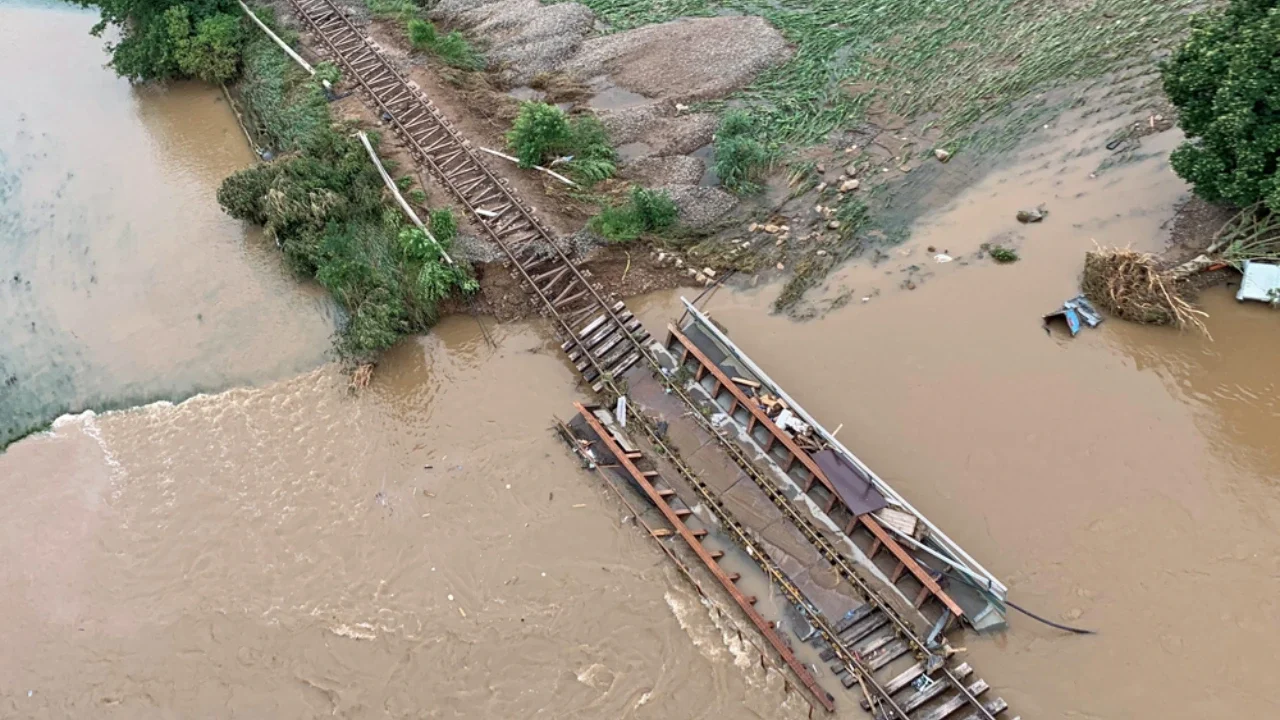By Muhammad Faisal
When floodwaters swept across Pakistan this year, they didn’t just drown homes and fields — they washed away parts of the nation’s railway lifeline. From Punjab to Sindh, railway tracks buckled, bridges cracked, and entire sections of routes vanished under water, forcing Pakistan Railways to pour more than Rs1 billion into urgent repairs.
Massive Flood Damage to Rail Tracks
Documents reviewed by this reporter show that major sections of railway tracks near flood-hit areas suffered severe destruction, costing the department Rs1,187.5 million in total for repairs and restoration.
According to the breakdown, Rs180 million was spent to restore lines between Thatta Mehla–Chund Railway Station, Abdul Hakeem–Darkana Railway Station, and Qila Soba Singh–Pasrur Railway Station.
Key Sections Under Repair
The reconstruction of the track between KM 66/0 and 80/14, covering the Thatta Mehla–Chund section, alone cost Rs987 million. In addition, Rs19.65 million went into fixing the Abdul Hakeem Bridge and other damaged stretches between MSKR-QSS, GDR-DBG, MTG-BOL, and HDR-TDM stations.
Flooding also forced the suspension of train operations on several routes, including Shadra–Narowal–Sialkot, Shorkot–Jhang–Shaheenabad, and Khanewal–Shorkot.
Trains Halted Across Multiple Sections
On August 27, operations of four trains — 9-UP, 10-DN, 125-UP, and 126-UP — were suspended on the Shadra–Narowal–Sialkot line after floodwaters breached the track between Pasrur and Qila Soba Singh. Full service was restored on September 13 once repair work was completed.
The Shorkot–Jhang–Shaheenabad route was also hit hard, with service suspended on September 28 after a 1,200-foot breach appeared near the Rivaz Railway Bridge No. 64 over the Chenab River, between Thatta Mehla and Chund Station. Two trains — 11-UP and 12-DN — normally run on this section.
Repair Work Nearing Completion
Pakistan Railways began repairs immediately and aimed to complete the work by October 15. Officials said the goal is to restore full connectivity across flood-affected regions and prevent further delays in passenger and freight movement.
While trains are slowly returning to their tracks, the billion-rupee recovery effort highlights how climate disasters are now hitting not just communities — but the very infrastructure that connects them.
Climate Impact on Railway Infrastructure
The devastating floods underline Pakistan’s growing struggle with climate resilience. From damaged bridges to displaced workers, the cost of rebuilding the rail network shows how vulnerable national infrastructure remains in the face of extreme weather.
Author Profile
-
Muhammad Faisal is a journalist based in Islamabad who covers business, railway, and commerce sectors of Pakistan.
His reporting focuses on infrastructure, economic policy, and how national developments impact everyday life.





